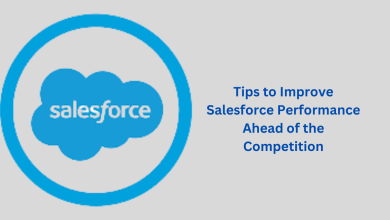AWS vs. Azure vs. GCP- Comparing The Big 3 Cloud Platforms

Cloud deployments have become commonplace. Companies frequently seek to establish multi-cloud systems for a variety of reasons. These include minimizing vendor lock-in by diversifying critical services across several providers, optimizing by putting the correct workload in the right cloud, and lowering risk by diversifying essential services across different providers. A comparison of AWS, Azure, and Google Cloud Platform can reveal the differences between the three public cloud providers.
Which Cloud Platform is the Most Effective
While having a quick response to this question would certainly make things easier, the truth is that there isn’t one.
Every business has unique requirements, and each service provider uniquely responds to them. A software developer, a financial institution, and an e-commerce firm, for example, all use cloud services in different ways. Furthermore, they must comply with different regulatory criteria.
Meanwhile, like any other business, cloud service providers may offer identical services, but they frequently carve out their own niche that caters to their ideal customers.
What Makes Google Cloud, AWS, And Azure Different from Each Other
Each big-three cloud platform has its own unique value-proposition and differentiating factors. Here’s an overview of the difference between AWS and Azure and GCP-
-
Amazon Web Services (AWS)
AWS began as a strategy to give large enterprise customers the option to sell online as a spin-off from Amazon.com’s e-commerce operation. When AWS began in 2006, it focused on providing developers with computing, storage, and database capabilities.
-
Google Cloud Platform (GCP)
While Amazon Web Services (AWS) offered IaaS, Google Cloud Platform (GCP) initially concentrated on PaaS. Developers could create and run web apps in Google-managed data centers. GCP has grown to encompass Google Suite, Big Data technologies, and administrative tools over time.
-
Azure
The first iteration was ambitious, focusing on computation, storage, and networking. It also sought to appeal to a wide range of commercial users. Thus, it included Windows Azure, Microsoft SQL,.NET, Live, and SharePoint.
A Closer Look
The three cloud providers are currently engaged in tough competition with one another. These services have been made available by all three providers in reaction to recent developments and the expectations of their respective customers, and it is anticipated that they will continue to expand their availability shortly.
The support of on-premises Microsoft software is made easier with the help of several technologies that Azure provides. Visual Studio Team Services makes Azure available as a hosting platform for Visual Studio projects.
The Internet of Things (IoT) is evolving toward a model that does not require servers.
APIs for natural language processing, speech recognition, translation, and various other cutting-edge technologies are included in Google Cloud. In addition to this, it offers Internet of Things services and serverless services.
Why do Businesses Select AWS
Because it was the first cloud service provider, Amazon Web Services (AWS) continues to innovate because it has a stronger basis on which to develop.
Why do Businesses Select Azure
Azure is primarily targeted at businesses that have already invested in Microsoft goods and services.
Why do Businesses Select GCP
GCP is geared toward developers who wish to create and run apps. Google Cloud Storage (GCS) provides block, file, and object storage, as well as lifecycle management rules for various data types. GKE (Google Kubernetes Engine) is a controlled, hosted staging environment for microservices implementation.
Factors to Consider while Choosing your Enterprise Cloud Platform
While each service provider specializes in a particular aspect of their business, they all have similar product lines. For example, Azure, like AWS and GCP, provides Machine Learning-as-a-Service (MLaaS). A corporation should think about more than just the product portfolio when selecting a cloud provider.
1. Regions
The number of areas with availability zones may be important depending on a company’s compliance needs.
This implies that a business should think about the following:
- AWS has a total of 26 geographical areas
- Azure has a total of 60 regions
- GCP: 29 areas
2. Availability
While availability is tied to location, it usually refers to performance and connectivity. Furthermore, availability includes failover, allowing for more reliable disaster recovery. Each region will typically have many availability zones.
This implies that a business should think about the following:
- AWS has a total of 84 availability zones
- Azure has 3 availability zones per area
- Google Cloud Platform has a total of 88 availability zones
3. Services that are Unique
Another example of a company’s business goals influencing cloud service provider selection. It also delves deeper into the distinctions between AWS, Azure, and GCP.
- AI/ML
- The Internet of Things (IoT)
- Virtual Reality/Augmented Reality
- Development of video games
- Business Intelligence
4. Cost Structure
Pricing and billing might be confusing among all three suppliers as each sports a varied price point and engagement models.
This means that a business must think about the following:
Required resources
Ability to control the spread of resources
- Governance
- decreases in pricing
- Changes in the pricing model
- Values of long-term vs. pay-as-you-go pricing
Security in Cloud-Based Environments
A company must verify that it meets its own security responsibility criteria, regardless of whatever cloud services provider it picks. Even if they use a cloud service provider, most businesses have their own data centers.
What Can Cloud Computing Do for You
Focusing on an in-house IT organisation can result in a system failure or ineffective task performance. Low turnaround times and failure to consider client requirements can result from a lack of space streamlining.
Cloud computing can help to mitigate this by providing a huge amount of capacity for IT infrastructures, giving businesses the flexibility and room to plan ahead.
Unlike traditional in-house IT infrastructure, the Cloud is not limited by poor data transport capacities. Cloud computing provides enough flexibility for management to make last-minute changes while maintaining operational stability.
The ability to make and implement swift business choices without worrying about the impact of IT infrastructure makes the Cloud a highly wanted tool.
It is self-evident that migrating to the cloud is an expensive endeavour.
However, if done correctly, cloud migration can pay for itself and eliminate the need for initial investments.
When evaluating Cloud computing expenses, keep in mind that ROI can come in the form of longer product lifecycles or asset optimization.
The enterprise’s requirements for additional software are reduced once it is on the Cloud, saving time and money.
Because you don’t have to pay for resources you haven’t used, the “pay-as-you-go” model of Cloud computing is very popular. Pay solely for the things that are essential to your business and organisational design while using Cloud computing.
The Cloud’s time and cash optimization benefits have made it the new top option of CIOs, who are now deploying it in almost every element of company.
In Conclusion
AWS has the upper hand in this battle of Azure vs. AWS vs. Google Cloud since it has a higher score. Azure and GCP continue to rise in the top cloud providers list. Therefore, it’s hard to say how long AWS will be the top cloud provider for long. No matter how first in line AWS is in the industry, Azure and GCP both have their own specific advantages. Azure cloud is a popular choice for companies who use Microsoft tools because it is easy to combine MS tools with Azure cloud. Only because GCP has the best price plan for Google Search and YouTube infrastructure should consumers choose it.
Whether you choose Google Cloud Platform, Azure, or AWS development services, you can expect greater flexibility, cost reduction, and wider reach with your migration to the cloud. We trust that this article will prove informative. Until next time, happy developing!





